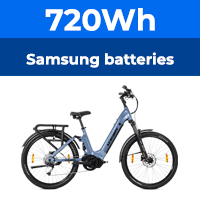The London courier territory is mostly quite flat so fairly suitable for fixed gear riding, which has advantages in traffic conditions. However, the heyday of fixed gear cycling was pre-WW2, and once it was realised with time and age the knee damage that could result from low cadences, it dropped almost completely out of fashion. Sad to think that in those earlier cycling days cyclists were proud of how much force they could exert at very low rotations and boasted of long extremely hilly trips in that fashion, ignorant of how much they would subsequently suffer for it.
It would be difficult to restrict the pressure at low cadence by tailoring the motor response, since the rider would still be able to apply high pressure while the increased motor power accelerated to a higher cadence point. The joint cartilage only needs one rupture or displacement with bones touching to start the cycle of developing damage, so even intermittent instances of excess pressure would be harmful.
.
I don't agree with you there Flecc I rode fixed wheel for 30 years. I usually rode on 68 inches which on a cadence of 96 rpm gave me about 19.2 mph with very little pressure on my knees etc when riding in normal terrain, I used to ride 7000 miles per year just commuting with this set up. Many of the off the peg road bikes used to only have a gear range of 108 to 49 inches these were sold to people who had never cycled which would do more damage than riding fixed.
My Uncle who died last year always rode fixed gear he was national hill climb champion in 1938 and continued to ride fixed up to him retiring from cycling in 1990 aged 83. He was always very disparaging of what he called honking which is what you define as " how much force they could exert at very low rotations and boasted of long extremely hilly trips in that fashion,". For many years he would ride ( with my aunty) to cornwall from Stoke on trent for his annual camping holiday. His usual gearing was 65inches but with a larger cog on the other side of his wheel for when it was hilly which gave him a gear of 50 inches.
The flywheel effect of the rear wheel on your legs is pure magic. So in my opinion rather than being from the past I see the magic of the fixed is the future for cyclists.
Fixed Wheel







